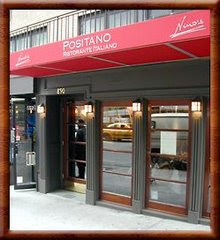Turtle Bay is just a “small town” in the middle of Manhattan. Throughout its history, authors, playwrights, actresses and ordinary locals have helped save their small “town” from commercial developers and preserve its history. However, before it became a fashionable part of the East Side, it was very much a slum.
Back in the 1700s, Turtle Bay was farm land. James Beekman built a famous colonial mansion, Mount Pleasant, in 1763 that was used in the Revolutionary War. Today, it is located on First Avenue between 49th and 50th streets and has housed the Rockefellers and Huntington Hartford.
By the early 1800s, lower Manhattan was expanding north and the farms were broken up to lay out the city grid. Brownstones began to rise up for homes, but also became an industrial site, home to stockyards, slaughterhouses and breweries. When the elevated railroads on Second and Third Avenue were built, Turtle Bay’s streets became dirty and noisy and would make it one of the least desirable areas of New York City into the early 1900s.
Turtle Bay is located between 43rd and 53rd streets in the area east of Lexington Avenue to the East River. Since the days of the slaughterhouses and stockyards, Turtle Bay has experienced a revival and become one of the wealthiest neighborhoods with the most desired addresses. When the Third Avenue El was torn down in 1956, celebrities started taking over the area.
Turtle Bay is located in Community District 6, which has a population of 136,152 (according to the census in 2000). Over 100,000 people are white, and 70 percent are college graduates or higher. Some of its inhabitants include Humphrey Bogart, Walter Cronkite, Katherine Hepburn and Derek Jeter.
One of the most famous landmarks is the
United Nations Headquarters starting on
49th Street along the
East River. Its famous parks include the Katherine Hepburn dedicated park, the private Tudor City Park and the public Ralph Bunche Park, which serves as a popular demonstration site during UN meetings.
James Grant Plaza is open 24 hours and has a café and free jazz concerts during the summer months.
The most famous historic landmark is Turtle Bay Gardens Historic District, located on 49th Street between Second and Third avenues. These brownstones were restored, and yards of two rows of town houses set back to back on 48th and 49th streets were turned into a communal garden by taking six foot strip from each plot to form a common path.
Turtle Bay is operated by the Turtle Bay Association, which is made up of a board of directors, who work closely with city officials to make sure their neighborhood has a voice that is heard. They focus on maintaining a sense of community and preservation in Turtle Bay.







1 comment:
Post that thing about why it's called "Turtle Bay" ...cute story.
Post a Comment